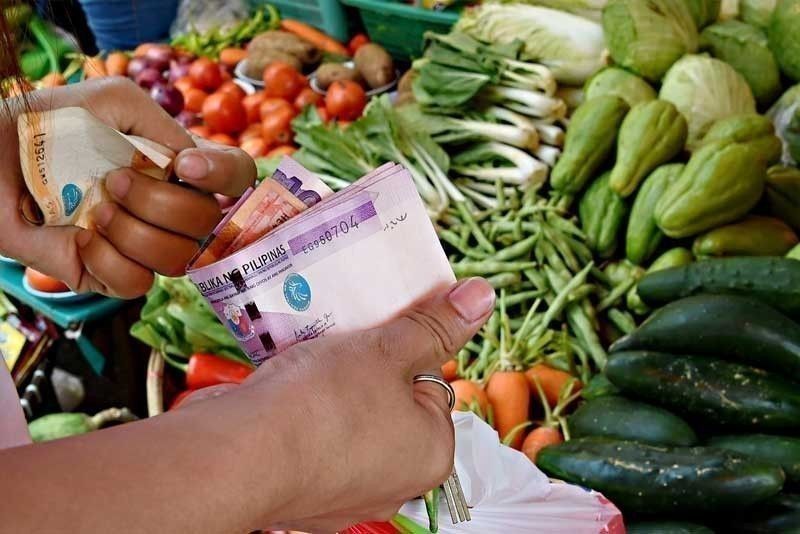Public measures in place to temper inflation – Palace

MANILA, Philippines — The government is working to address the impact of rising prices of goods and ensure enough supply of affordable food, Malacañang said yesterday.
Inflation, or the rate of increase in the prices of goods and services, rose from 4.2 percent in January to 4.7 percent in February 2021 mainly due to higher food prices, according to economic managers.
Food inflation accelerated to seven percent from 6.6 percent because of the outbreaks of African swine fever (ASF) and decreased local production of cattle and poultry.
Cabinet Secretary KarloNograles said the government has stepped up measures to address the pork supply lack, one of the main inflation drivers, adding that the Department of Agriculture (DA) has recommended a higher minimum access volume (MAV) to allow the importation of more pork at lower tariffs.
“Pork prices are merely temporary and the monetary board (of the central bank) will meet to assess and dissect the drivers of inflation and the BSP (Bangko Sentral ng Pilipinas) will undertake steps to temper inflation,” Nograles told radio station dzBB.
“They (official) said it’s just a temporary increase and we’ll be able to stabilize it by March,” he added.
Nograles denied that the government’s interventions to stem inflation are too late.
“We anticipated this so we came up with solutions like (recommending a higher) MAV and buying pork from other regions. But those were just short-term activities. We need mid to long-term solutions,” he said.
“That’s the reason why we need to increase the supply of pork and we cannot increase it locally because we are still battling ASF. That’s why we’re looking into importation to stabilize (supply)... We need a repopulation, which is being done by the DA,” he added.
Nograles also expressed hope that the supply of fish would increase during the open season. There have been calls to impose a price freeze on galunggong (round scad) to make it affordable to ordinary consumers.
“We’re looking into alternative supplies when it comes to fish,” Nograles said.
Nograles also assured the public that the government is striking a “healthy balance” when it comes to reopening the economy and is not forgetting food production.
Hog deliveries
Meanwhile, the DA said Metro Manila markets are now receiving more than enough supply to meet daily pork consumption as hog deliveries from the provinces continue.
In a radio interview with dzBB over the weekend, Assistant Agriculture Secretary Noel Reyes said Metro Manila markets are starting to receive more than enough supply of the National Capital Region (NCR)’s daily consumption of 4,000 hogs as more are being delivered from the provinces.
Reyes said the number of deliveries has been increasing compared to the start of the program’s implementation as raisers and traders needed to be convinced to mobilize their hogs.
“Now it has reached the highest in recent days,” Reyes said in Filipino, adding that daily deliveries reached as high as 7,000.
On Friday, latest data from the DA showed that a total of 5,506 heads of hogs and 31,826 kilos of carcasses were delivered to Metro Manila.
This brought the total deliveries to the National Capital Region from the provinces from Feb. 8 to March 5 to 124,537 heads and 785,043 kilos of carcasses.
Calabarzon (Cavite, Laguna, Batangas, Rizal and Quezon) supplied the largest number of live hogs, accounting for 47.40 percent of total deliveries.
This was followed by Western Visayas with 16.96 percent and Mimaropa (Mindoro, Marinduque, Romblon, Palawan) with 9.43 percent.
In addition, Soccsksargen (South Cotabato, Cotabato, Sultan Kudarat, Sarangani, General Santos) contributed 9.31 percent.
Central Luzon accounted for 6.24 percent of the total hog deliveries.
Hog shipments were also made from other regions such as Bicol, Cagayan Valley, Central Visayas, Ilocos, Northern Mindanao and Zamboanga peninsula.
Central Luzon shipped the largest volume of carcasses, accounting for 96.06 percent, followed by the Bicol region with 2.89 percent and Zamboanga peninsula with 0.99 percent.
The DA earlier said it was looking to deliver to Metro Manila at least 15,000 hogs per week for two months to stabilize pork prices in the market. – Catherine Talavera
- Latest
- Trending



























